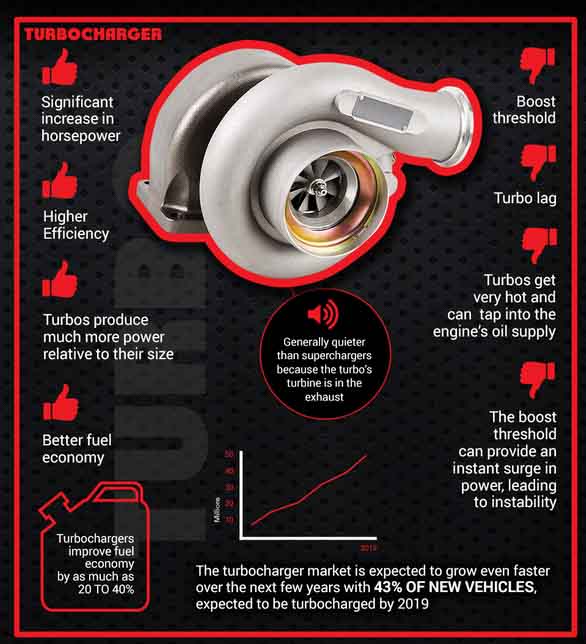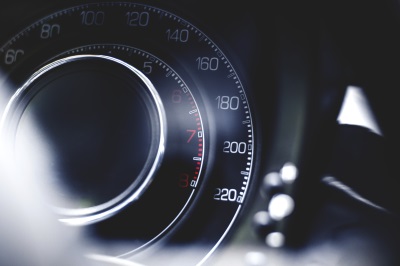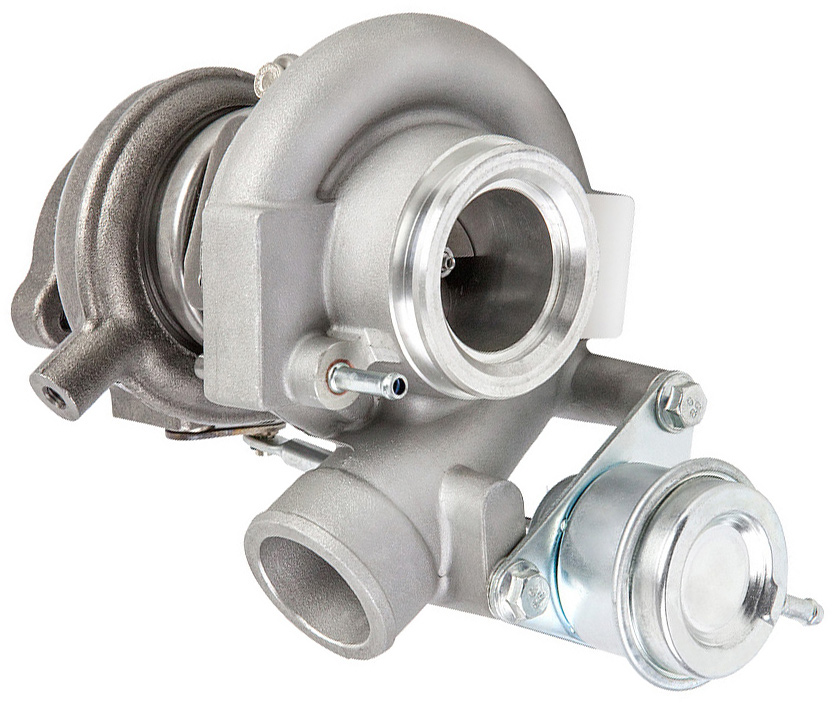
How Does a Turbocharger Work?
Turbochargers are commonly used on truck, car, train, aircraft and construction equipment engines. The way a turbo works is quite unique. Since we all know that the engine pushes out exhaust gasses when running, the gasses are forced through the natural piping from the combustion chamber and pushed into the turbine (turbo). The exhaust gasses spin the turbine, which is connected to a shaft with two spinning blades, also known as compression wheels, and bearings to help it spin. They are also using the same engine oil lines to help keep the bearings cool so the turbo spins perfectly. The turbo has a cool side and a hot side, a turbine wheel on one end and a compression wheel on the other. That pressure is about 950 degrees Celsius on average. This is way too hot to go back into the motor and can cause issues. The turbine wheel is for the inlet port and the compressor wheel is for bringing in air from outside the engine and compressing it and directing it back to the engine. There is also cooler air being forced in from the pressure (boost) side at the same time. So the hot air from the turbo will pass through an intercooler, usually located on the side or directly behind the front bumper of the vehicle, and is used to cool down the system through the coils. The cooler air then travels back up to the combustion chamber and creates a cycle. Some turbos have wastegates to help prevent over-boosting and allows the opportunity to help increase horsepower to the vehicle and/or equipment.
How Does a Turbo Diesel Engine Work
The turbo diesel engine is unique on its own. It runs on no spark plugs. The diesel engine is more powerful than gas engines. When the piston goes down first; it allows only air to enter into the cylinder. As it goes back up, the air valve shuts and compresses the air that is left in the chamber. When shut, the air can reach temperatures of around 700 degrees Celsius. So hot that it ignites the fuel from the fuel injector and creates a contained explosion that gives the power stroke. When the piston goes down fast, the exhaust valve opens and pushes all the exhaust out of the cylinder.
In regards to the turbo side, for a turbo diesel option, the option has been recommended throughout the years. Take for example, the TDI feature (Turbo Diesel Injection) from Volkswagen, its turbo draws in fresh air to ensure the best cylinder charging. Then air is compressed from the turbine. The more air that gets inside the better the vehicle performs. There is an exact amount of fuel that is injected into the cylinders then combusted. TDI actually gives the engine a higher pulling power and better in-fuel consumption. The injection system is unique also because it’s designed to release the minimal amount of fuel. Air and fuel mix with the diesel system and is assisted with more fresh air and ensures the best driving force with the turbo.
Diesel engines require a stronger block and have a louder running noise than normal turbocharged vehicles. With 4 cylinder diesel, with or without turbo, four forms of the stroke can occur at all times which are a good thing. The suction, compression, exhaust and power operations will occur more frequently. The power stroke is always formed in the engine and allows the engine to perform better. The more cylinders that the engine has, the smoother it will operate. In regards to other vehicles, i.e. trucks, vans, SUV, etc., they also use the same method but can differ depending on the amount of pistons in the block.
What is Turbo Boost?

Turbo boost is a simplified term that enthusiasts and mechanics use to describe the air pressure that is built up in the inlet side of the manifold. The whole system is pressurized. The pressure is what is actually helping push the engine to be better and cleaner. When fuel and air is put together inside the chamber where the piston is, it causes an internal combustion.
A lot of us want more power with the turbo set ups but you will need air to help with that as well as fuel. Every turbo application is similar but different as well. There are different air-fuel ratios that have certain ranges, depending on what set up you are going for. The most common are the performance turbochargers but the OEM (original equipment) turbos are better for gas mileage. Most of us enthusiasts assume that more fuel will allow us to get more power. Well that may be correct, however, with a turbo vehicle, you will need air to work side-by-side with the fuel and assist with pressure.
If you have a supercharged engine (non-turbocharged), atmospheric pressure is key. Atmospheric pressure is defined as the force per unit area exerted against a surface by the weight of the air above that surface. Pressure increases as the weight of the air above it increases. Depending on the amount of air an engine can take in, it will determine how much atmospheric pressure it can handle. Due to this set up, these types if engines are not able to produce more power at lower altitudes without a turbo or supercharged assist. If the atmospheric pressure is less than a non-turbo engine there will be less air flow in the engine.
With a turbo kit installed on the engine, the exiting exhaust heat can produce energy to run an air compressor. The air compressor can increase the amount of air that the engine takes in by compressing it first. In other words, more air, more fuel and of course, more power. The more you push the engine, the more performance is pushed from the turbo and its internals. The less it is pushed the better MPG the vehicle will get and will thus run cleaner. To help monitor the amount of boost that is building up and/or releasing, it is advised to get a boost gauge and monitor the power of the engines performance.


